Fremontodendron californicum, California Flannelbush
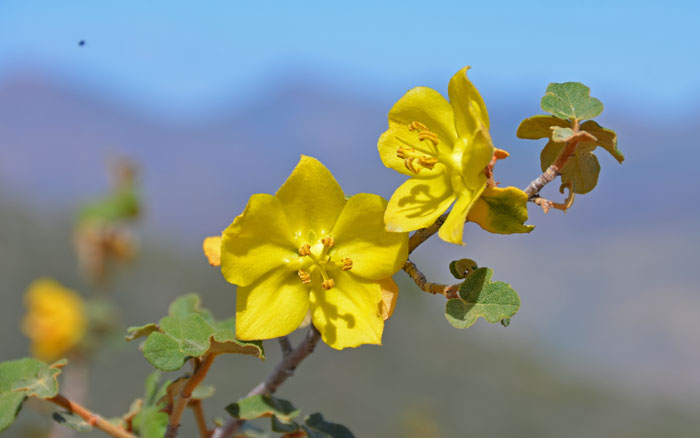
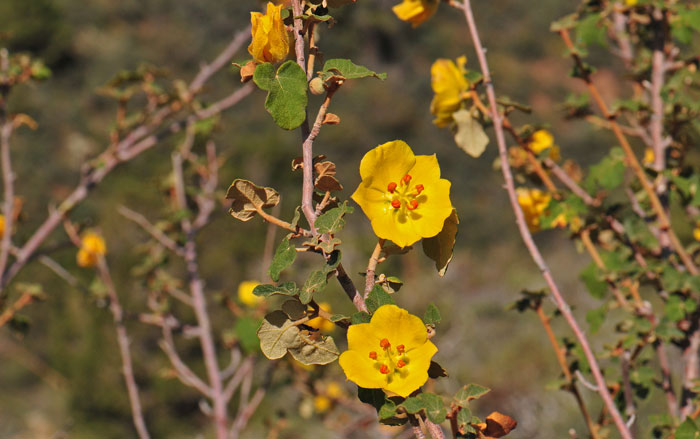
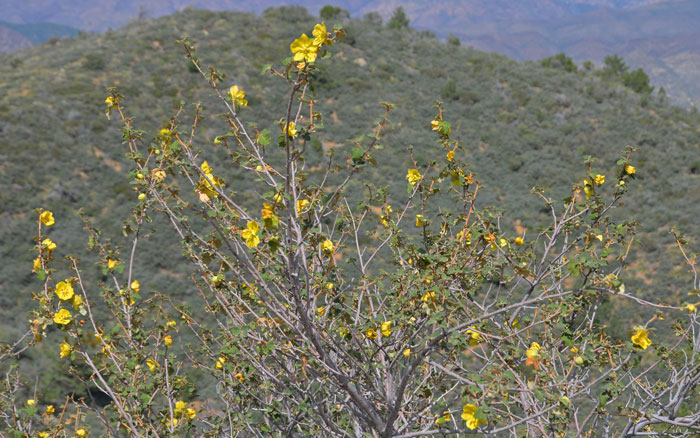
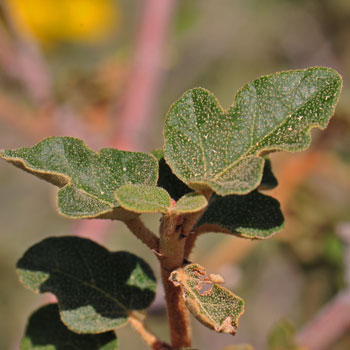
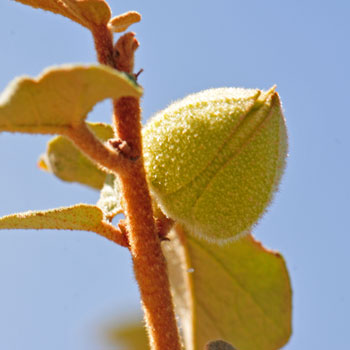
Scientific Name: Fremontodendron californicum
Common Name: California Flannelbush
Also called: California Flannel Bush, California Fremontia, Flannel Flower, Flannelbush
Family: Malvaceae, Globe Mallow Family
Synonyms: (Fremontia californica)
Status: Native
Duration: Perennial
Size: Up to 12 feet or more.
Growth Form: Shrub or small tree, evergreen, short trunk, branched near the ground, sprawling branches.
Leaves: Green above; lighter beneath, leaf thick or leathery, alternate, evergreen, usually palmately compound with three rounded lobes, covered with fuzzy stellate hairs.
Flower Color: Bright yellow, margins sometimes reddish, flowers solitary, 5 petaloid or petal-like sepals, hairy gland at base of sepal, flowers on short stems, fruit is a golden-brown capsule.
Flowering Season: May through October.
Elevation: 3,500 to 6,000 feet.
Habitat Preferences: Dry slopes and sides of canyons, chaparral, pinyon-juniper and oak/pine communities.
Recorded Range: In the United States, California Flannelbush is found only in Arizona and California. It is also found in Baja California. In Arizona, it is primarily found in the Mazatzal and Superstition Mountains in the central part of the state and in Mohave County as well. It is well represented in California.
North America & US County Distribution Map for Fremontodendron californicum.
U.S. Weed Information: No data available.
Invasive/Noxious Weed Information: No data available.
Wetland Indicator: No data available.
Threatened/Endangered Information: In Arizona, Fremontodendron californicum is salvage restricted.
Genus Information: 3 species in Fremontodendron. Two species found only in California. The California native, Pine Hill Flannelbush, *Fremontodendron decumbens, is listed as Endangered by the U.S. Fish & Wildlife Service. Mexican Flannelbush, Fremontodendron mexicanum is found only in San Diego County, California. Several subspecies recognized by some taxonomists.
The Plant List includes 2 are accepted species for Fremontodendron. *Note: The Plant List includes Fremontodendron decumbens as a synonym of Fremontodendron californicum subsp. decumbens.
Comments: California Flannelbush is relatively rare in Arizona, growing in small localized populations. It is an attractive plant in bloom with dramatic large bright yellow flowers. A common variety, California Slippery Elm is grown as a popular ornamental in California. This species was formerly treated within the family Sterculiaceae Family.
According to Michael Carters, the genus Fremontodendron was named in honor of John C. Frémont who collected the plant in California in 1846.
Several uses have been identified for California Flannelbush. View species account from Native American Ethnobotany, University of Michigan, Dearborn.

